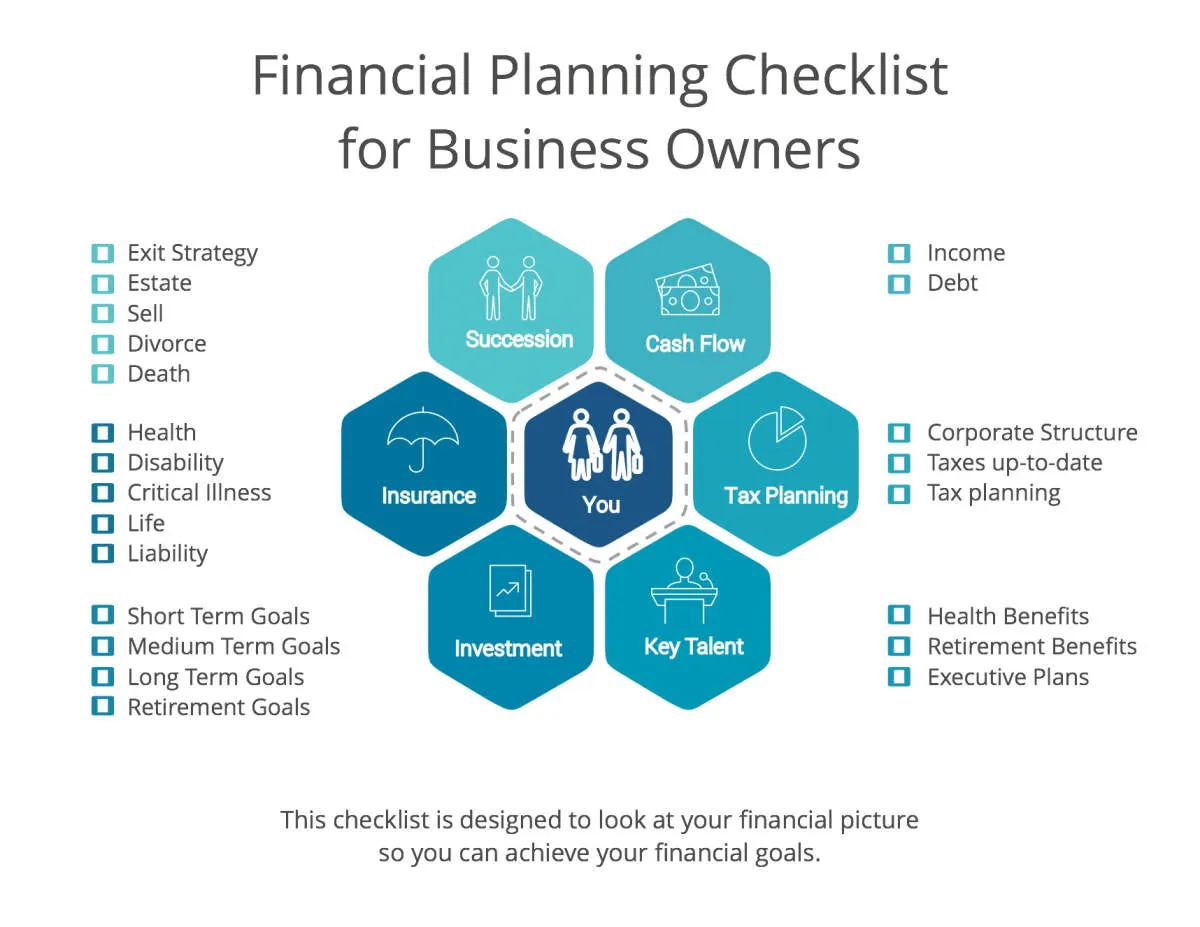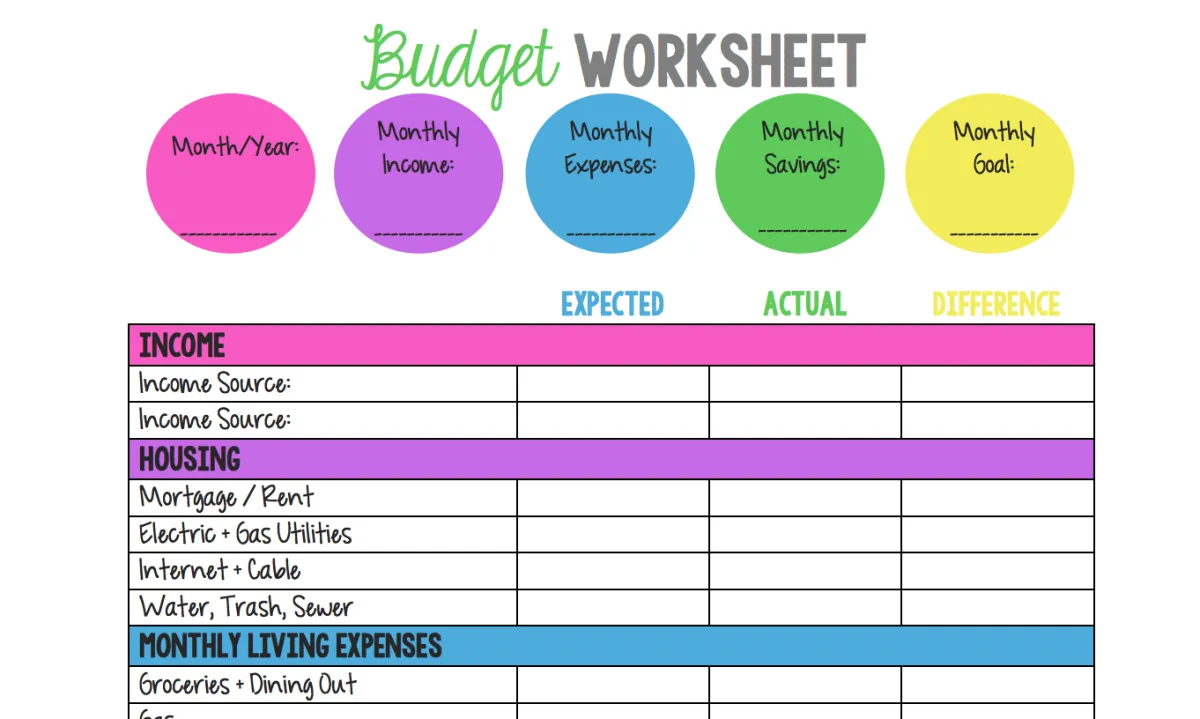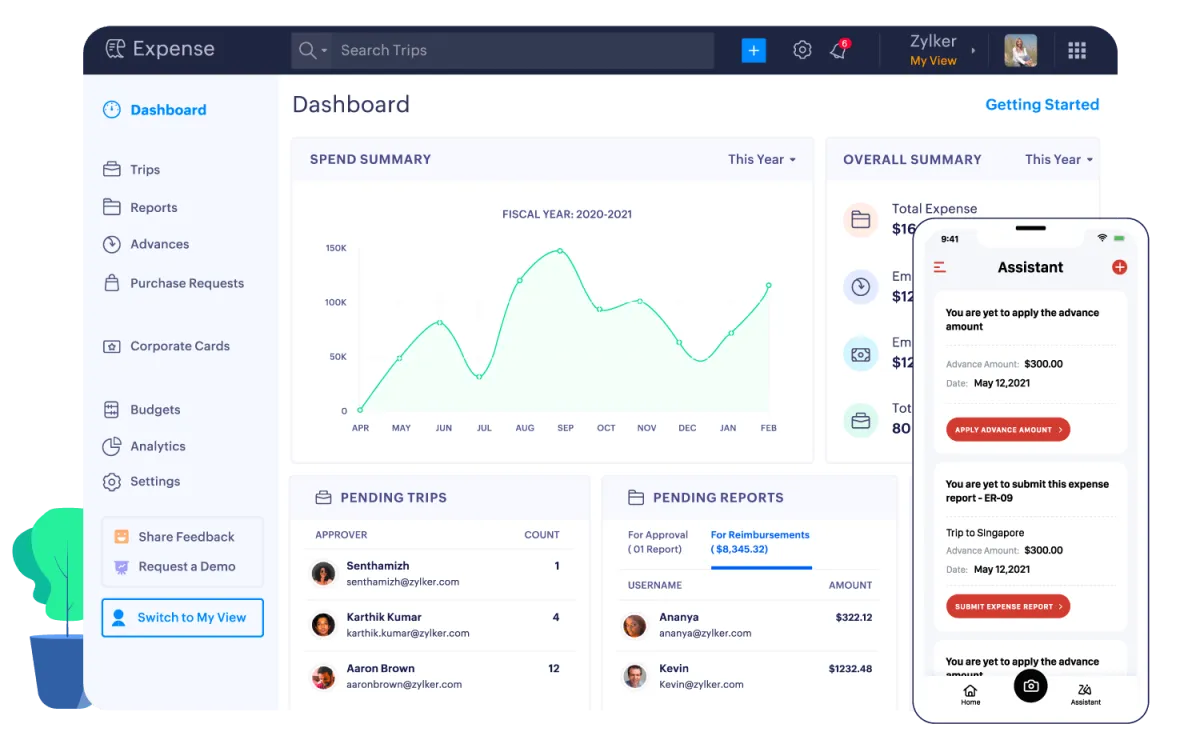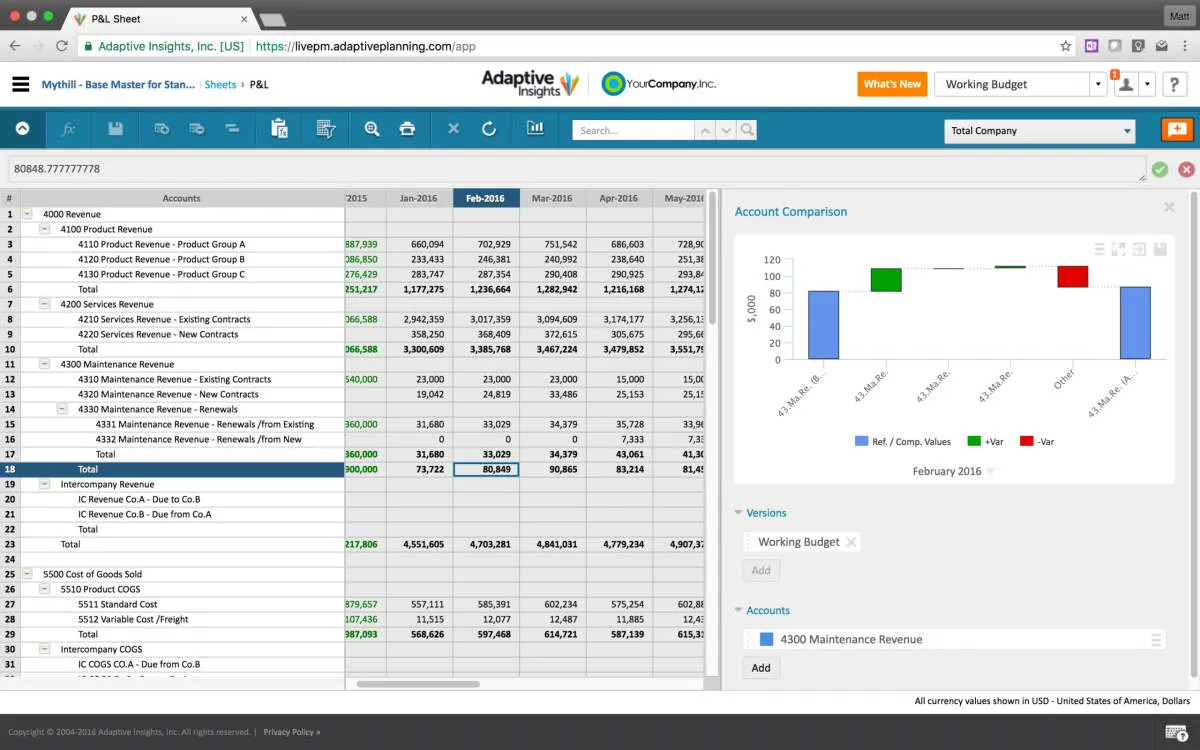In the world of business, creating an effective budget is crucial for sustainable growth. Learn how to craft a practical and efficient business budget that will help you achieve your financial goals with ease.
Importance of a Business Budget
A business budget is a crucial tool for any business, regardless of its size or industry. It serves as a roadmap for financial success, providing a clear understanding of income, expenses, and projected financial performance. Here’s why a business budget is essential:
1. Control Spending and Improve Profitability
A budget helps you track where your money is going. By setting spending limits for different departments and activities, you gain better control over your finances. This allows you to identify areas where you can cut costs, reduce unnecessary expenses, and improve overall profitability.
2. Secure Funding and Investment
Investors and lenders require a clear picture of your financial health before considering funding your business. A well-structured budget demonstrates your ability to manage finances responsibly, instilling confidence in potential stakeholders.
3. Make Informed Business Decisions
With a budget, you can make informed decisions about pricing, investments, and expansion strategies. It provides valuable insights into your financial capacity, enabling you to assess risks and opportunities effectively.
4. Set Realistic Goals and Track Progress
A budget helps you set realistic financial goals for your business. By comparing your actual performance against your budget, you can track your progress, identify areas that require attention, and make necessary adjustments to stay on course.
5. Prepare for Uncertainties
Unexpected economic downturns, market fluctuations, or unforeseen expenses can severely impact businesses. A budget helps you anticipate and prepare for such uncertainties by building a financial cushion and developing contingency plans.
Assessing Your Business Finances

Before you can create a budget, you need a clear understanding of your business’s current financial position. This means taking a deep dive into your income, expenses, assets, and liabilities. This process, while maybe tedious, is crucial for building a realistic and effective budget.
Tracking Income and Expenses
Start by gathering information about your business’s income and expenses over the past several months (ideally, 12 months for a comprehensive view).
- Income: Identify all sources of revenue, including sales, services rendered, investments, and any other cash inflow.
- Expenses: Categorize your expenses into fixed costs (rent, salaries, insurance) and variable costs (raw materials, marketing).
Analyzing Financial Statements
Utilize key financial statements to gain further insights:
- Profit and Loss Statement: This statement provides a snapshot of your business’s revenues, expenses, and profits (or losses) over a specific period.
- Cash Flow Statement: This report tracks the movement of cash both into and out of your business. It’s crucial for understanding your liquidity and ability to meet short-term obligations.
- Balance Sheet: Your balance sheet offers a snapshot of your business’s assets (what you own), liabilities (what you owe), and equity (the owner’s stake) at a specific point in time.
Identifying Areas for Improvement
Once you have a solid understanding of your income, expenses, and overall financial health, you can begin identifying areas where you can cut costs, boost revenue, or optimize spending.
Setting Financial Goals
A business budget without clear financial goals is like a ship without a rudder – you might set sail, but you’re unlikely to reach your desired destination. Before you dive into the nitty-gritty of expense tracking and budget allocation, you need to define exactly what you want to achieve financially with your business.
Consider these key areas when setting your financial goals:
- Revenue and Sales: What are your target revenue and sales figures? Set realistic yet ambitious targets for monthly, quarterly, and yearly revenue growth.
- Profitability: Beyond revenue, what profit margin are you aiming for? Determine a healthy profit margin that aligns with your industry and growth aspirations.
- Expenses: What are your anticipated operating expenses? Outline fixed and variable costs to understand where your money needs to go.
- Cash Flow: How much cash do you need on hand to operate smoothly? Project your cash flow needs to ensure you can cover expenses and invest in growth opportunities.
- Investment: How much do you plan to reinvest back into the business? Allocate funds for future development, equipment upgrades, or expansion plans.
Ensure your financial goals are SMART – Specific, Measurable, Achievable, Relevant, and Time-Bound. For example, instead of “increase sales,” aim for “increase sales by 15% in the next quarter.” This provides a clear target and timeframe to track your progress.
Creating a Realistic Budget

A realistic budget is the cornerstone of a successful business plan. It’s not just about crunching numbers; it’s about understanding your business’s financial capacity and aligning your spending with realistic revenue projections. Here’s how to create a budget that’s both practical and effective:
1. Base Your Budget on Accurate Data
Avoid guesswork. Use historical data from your business, if available, to get a clear picture of past income and expenses. If you’re a new business, research industry benchmarks and competitor data to inform your projections.
2. Project Your Income Conservatively
It’s tempting to be optimistic, but overestimating income can lead to overspending and financial strain. Be conservative in your revenue projections, especially in the initial stages of your business.
3. Factor in All Possible Expenses
Create a comprehensive list of all potential expenses. Don’t forget to include both fixed costs (rent, salaries) and variable costs (raw materials, marketing). Consider unexpected expenses as well, building in a contingency fund to cover unforeseen circumstances.
4. Prioritize Essential Spending
Distinguish between “needs” and “wants.” Prioritize expenses critical for your core operations and revenue generation. Delay or reduce non-essential spending until your financial position is more secure.
5. Regularly Review and Adjust
A budget is not static. It’s essential to review your budget regularly, ideally monthly or quarterly. Compare your projected figures to actual income and expenses. Make necessary adjustments based on your business performance, market changes, and unforeseen events.
Managing Cash Flow
A budget is more than just numbers on a spreadsheet; it’s a living document that helps you understand and control your business’s financial health. A crucial aspect of that health is managing cash flow – the movement of money in and out of your business.
Why is managing cash flow important?
Simply put, positive cash flow keeps your business running. It allows you to:
- Pay your bills on time (rent, utilities, suppliers)
- Pay your employees
- Invest in growth opportunities
- Build a safety net for unexpected expenses
Tips for Effective Cash Flow Management within your Budget:
- Accurate Forecasting: Project your cash inflows and outflows realistically. Don’t underestimate expenses or overestimate income.
- Track Everything: Use accounting software or spreadsheets to meticulously track every dollar coming in and going out.
- Incentivize Early Payments: Offer discounts or incentives for customers who pay invoices promptly.
- Negotiate Payment Terms: Talk to your suppliers about extending payment deadlines to improve your cash flow.
- Control Inventory: Don’t tie up too much cash in inventory. Use inventory management techniques to optimize stock levels.
- Separate Business and Personal Finances: Avoid confusion and maintain accurate financial records by having dedicated accounts for your business.
- Build a Cash Reserve: Aim to have 3-6 months’ worth of operating expenses saved as a buffer for emergencies.
- Regularly Review and Adjust: Your budget isn’t static. Review it monthly or quarterly, comparing it to your actual cash flow, and make adjustments as needed.
Monitoring Business Expenses

Creating a business budget is a crucial step, but it’s only half the battle. To ensure your budget stays on track and yields the desired financial outcomes, consistent and diligent expense monitoring is essential. This involves keeping a close watch on where your money is going and identifying any discrepancies between your planned and actual spending.
Here’s why monitoring business expenses is critical:
- Identifies Overspending: Monitoring allows you to quickly identify areas where you’re exceeding your budget, allowing for timely adjustments and preventing small overspends from snowballing into significant financial issues.
- Uncovers Savings Opportunities: By closely examining your expenses, you can identify areas where costs can be reduced, services can be renegotiated, or more cost-effective alternatives can be explored.
- Improves Budgeting Accuracy: Regularly comparing actual spending to your budget helps you understand spending patterns, seasonality, and other factors that impact your finances, allowing you to refine future budgets for greater accuracy.
- Supports Informed Decision-Making: Having a clear picture of your expenses provides the financial insights needed to make informed decisions about investments, pricing strategies, resource allocation, and other critical business aspects.
Implementing effective expense monitoring involves:
- Choosing a Tracking System: Select a method for tracking expenses that aligns with your business needs. This could involve using accounting software, spreadsheets, or dedicated expense tracking apps. The key is to choose a system that’s user-friendly and encourages consistent data entry.
- Categorizing Expenses: Establish clear categories for your business expenses (e.g., rent, utilities, marketing, payroll). Categorization simplifies analysis, allowing you to identify trends and areas of concern more effectively.
- Regular Review: Make expense monitoring a regular practice. Review your spending weekly or monthly, comparing actual expenses to your budgeted amounts. This consistent review helps identify and address discrepancies promptly.
- Analyzing Variances: When you notice differences between your actual and budgeted expenses, take the time to investigate the reasons behind them. Understanding the root causes of variances allows you to adjust your budget or spending habits more effectively.
Adjusting Your Budget as Needed
Creating a business budget is not a “set it and forget it” task. As your business grows and changes, so too will your financial needs and priorities. Regularly reviewing and adjusting your budget is crucial to ensure it remains a relevant and effective tool for managing your finances.
How often should you adjust your budget? This depends on the nature of your business and the volatility of your industry. A good rule of thumb is to review your budget quarterly, with more frequent adjustments made during periods of significant change or uncertainty.
What aspects of your budget might need adjustment? Consider the following:
- Revenue: Have your sales increased or decreased? Are you launching new products or services?
- Expenses: Have the costs of materials, labor, or overhead changed? Are there new expenses related to business growth?
- Market conditions: Are there external factors, such as economic downturns or new competitors, impacting your business?
- Business goals: Have your priorities shifted? Are you focusing on expansion, hiring, or product development?
By closely monitoring your actual financial performance against your budget, you can identify areas where adjustments are needed. This might involve:
- Reallocating resources from underperforming areas to areas of growth.
- Negotiating better rates with suppliers or vendors.
- Cutting unnecessary expenses to improve profitability.
- Seeking additional funding to support expansion plans.
Remember, a budget is a living document that should evolve alongside your business. By embracing flexibility and making adjustments as needed, you can ensure your budget remains a valuable tool for achieving your financial goals.
Using Budgeting Tools and Software

While spreadsheets can be helpful for basic budgeting, using dedicated budgeting tools and software can greatly simplify the process and provide valuable insights. These tools offer a range of features designed to streamline your budgeting workflow, such as:
- Automated Data Entry: Connect your bank accounts and credit cards to automatically import transactions, reducing manual entry and saving time.
- Expense Tracking and Categorization: Effortlessly track your income and expenses, categorize transactions, and identify spending patterns.
- Budget Creation and Forecasting: Set realistic budgets based on your financial goals, forecast future cash flow, and adjust spending accordingly.
- Financial Reporting and Analysis: Generate comprehensive financial reports, visualize your budget versus actual spending, and gain insights into your financial health.
- Goal Setting and Tracking: Set financial goals, track your progress, and stay motivated to achieve your objectives.
There are numerous budgeting tools and software options available, each with its own strengths and features. Some popular choices include:
- Mint
- YNAB (You Need a Budget)
- Personal Capital
- EveryDollar
- PocketGuard
When selecting a budgeting tool, consider your specific needs and preferences. Factors to evaluate include:
- Ease of use
- Features and functionality
- Pricing
- Customer support
- Integrations with other financial accounts
Conclusion
In conclusion, creating a successful business budget requires careful planning, regular monitoring, and willingness to adapt. By leveraging financial data and setting realistic goals, businesses can optimize their resources and drive growth.
